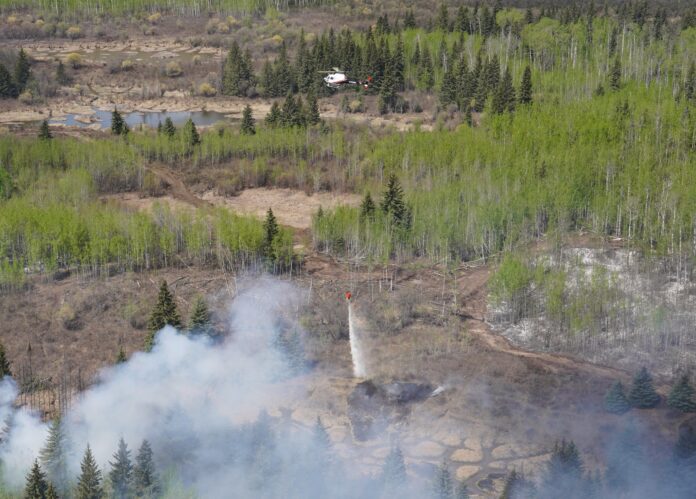The 2024 wildfire season was a week longer and saw more wildfires than last year, but less land was damaged according to the province.
October 31st marks the end of wildfire season and according to the season-end report from Province of Alberta officials, Alberta Wildfire responded to more than 1,210 wildfires in the forest protection area. The 2024 number exeeded the number of fires that broke records in 2023 by 130. However, a reported 705,000 hectares of the forest was burned, roughly a third of the 2.2 million hectares burned last year.
According to provincial officials, the decline in the amount of area that was scorched by flames is a testament to work that was put in ahead of time. This preparation included the recruitment of 100 additional wildland firefighters and 40 additional contract wildland firefighters. With these recruits there were roughly 1,900 firefighters, contractors and support staff reported to be working on Alberta’s provincial response. The province also received support from over 1,300 other firefighters and support staff who came from numerous organizations worldwide.
A statement from Minister of Forestry and Parks Todd Loewen reads, “While the 2024 wildfire season was challenging, our coordinated efforts and the resilience of Albertans have been crucial in mitigating the impact. We will continue to adapt and strengthen our wildfire management strategies to protect our communities and natural resources.”
In the middle of wildfire season, the Jasper wildfires evacuated the tourist town and Alberta Wildfire provided support to Parks Canada crews during the emergency. The federal department was in charge of the incident and officials say provincial crews provided immediate aid and resources with support personnel, firefighters, aircraft and equipment.
Other communities that were evacuated because of wildfires since February 20th include Garden River, John D’Or Prairie, Fox Lake in the Little Red River Cree Nation, Chipewyan Cree Nation, along with an area near Peace River and four neighbourhoods in Fort McMurray.
What officials call a “mild winter” and extremely dry conditions at the beginning of the year the wildfire danger level was elevated and this led to the province starting the wildfire season early. Throughout the season the majority of fires were reportedly human-caused, with 410 lightning-caused wildfires in July, which is reportedly the highest number in 20 years.



